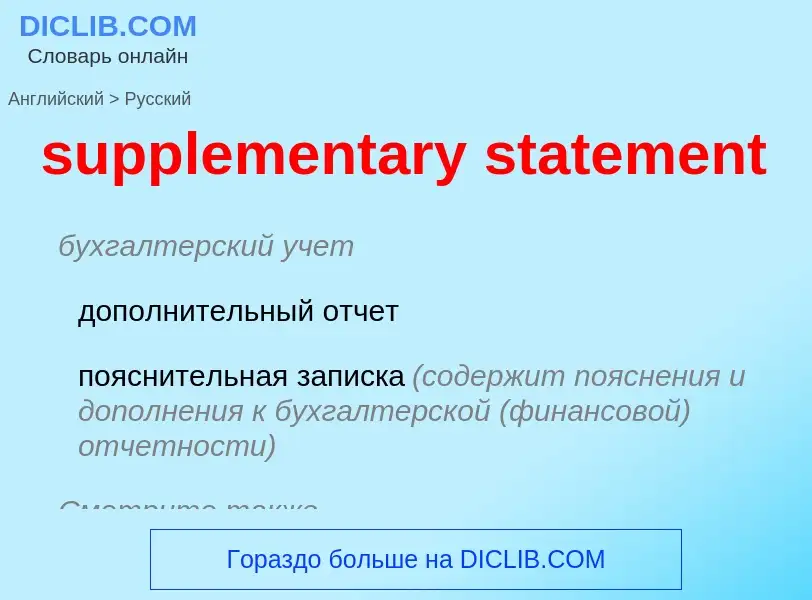Translation and analysis of words by ChatGPT artificial intelligence
On this page you can get a detailed analysis of a word or phrase, produced by the best artificial intelligence technology to date:
- how the word is used
- frequency of use
- it is used more often in oral or written speech
- word translation options
- usage examples (several phrases with translation)
- etymology
supplementary statement - translation to English
бухгалтерский учет
дополнительный отчет
пояснительная записка (содержит пояснения и дополнения к бухгалтерской (финансовой) отчетности)
Смотрите также
математика
положительное высказывание (в логике высказываний)
Definition
Wikipedia

The contingent vote is an electoral system used to elect a single representative in which a candidate requires a majority of votes to win. It is a variation of instant-runoff voting (IRV). Under the contingent vote, the voter ranks the candidates in order of preference, and the first preference votes are counted. If no candidate has a majority (more than half the votes cast), then all but the two leading candidates are eliminated and the votes received by the eliminated candidates are distributed among the two remaining candidates according to voters' preferences. This ensures that one candidate achieves a majority and is declared elected.
The contingent vote differs from IRV which allows for many rounds of counting, eliminating only one weakest candidate each round. IRV allows a small chance the candidate outside the top two can still win. The contingent vote can also be considered a compressed form of the two-round system (runoff system), in which both 'rounds' occur without the need for voters to go to the polls twice.
Today, a special variant of the contingent vote is used to elect the President of Sri Lanka. Another variant, called the supplementary vote, is used to pick directly elected mayors and police and crime commissioners in England. In the past the ordinary form of the contingent vote was used to elect the Legislative Assembly of Queensland from 1892 to 1942. To date, this has been the longest continuous use of the system anywhere in the world. It was also used in the US state of Alabama in the 1920s.




